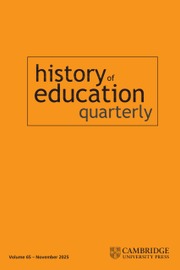4.
Neal Gross, in his study Who Runs Our Schools? (New York: John Wiley and Sons, Inc., 1958), is careful to distinguish between the perceptions of administrators and those of others concerned (e.g., local businessmen), but at the same time, by placing the locus of conflict on the community level, Gross seems to accept part of the administrator's own interpretation. Only toward the end of the study does he bring in broader elements, such as the administrators' education. A far more obvious case of accepting the traditional educational formulations is seen in Orville G. Brim's summary and program for educational sociology, done under the aegis of Russell Sage (Sociology and the Field of Sociology, New York: 1958). As one instance, Brim accepts the old either-the-school-shapes-the-public or the-public-shapes-the-school argument and quickly settles it by opting for the public (society) and his profession (a scientific sociology).Google Scholar

